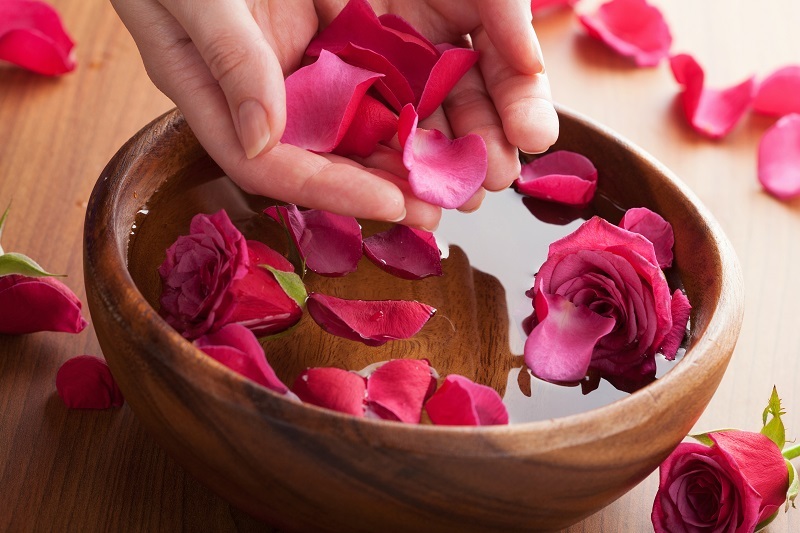Mastering the Art of Orchid Care
Posted on 04/07/2025
With their captivating beauty and striking variety, orchids have long enchanted plant enthusiasts worldwide. However, to many, orchid care can seem daunting and mysterious. Yet, with the right knowledge and approach, anyone can nurture these exotic flowers to bloom spectacularly. Whether you are a beginner just learning about cultivating orchids or an experienced grower looking to refine your skills, this comprehensive guide will reveal the secrets to mastering orchid care and ensuring your orchids remain vibrant and healthy.
Understanding the Orchid Family
Orchids belong to the fascinating family Orchidaceae, one of the largest groups in the plant kingdom with over 25,000 species. Their astonishing diversity enables them to thrive in habitats ranging from tropical rainforests to arid deserts.
Popular Orchid Varieties for Home Growers
- Phalaenopsis (Moth Orchid): Ideal for beginners, they bloom for months and thrive in home conditions.
- Cattleya: Known as the "Queen of Orchids", they produce stunning, fragrant flowers.
- Dendrobium: Versatile and adaptable, with a range of flower colors and shapes.
- Oncidium (Dancing Lady): Rewarding for diligent caretakers, these orchids put on a spectacular display.
- Vanda: Known for their large blooms and vivid colors, they require bright light and humidity.

Getting Started: Choosing the Right Orchid
Start your journey to successful orchid cultivation by selecting the right type. Phalaenopsis orchids are excellent for beginners due to their forgiving nature and stunning, long-lasting blooms. More advanced orchid varieties like Cattleya or Vanda are suitable for those willing to provide specialized care conditions.
Key Factors When Selecting an Orchid
- Condition of roots: Look for firm, green or silvery roots with no signs of rot.
- Leaf health: Leaves should be vibrant, free from spots, blemishes, and insects.
- Flower spikes: Buds and blooms indicate a healthy, mature orchid.
Opportune Environment: Light, Temperature, and Humidity
For thriving, orchid plants have specific environmental preferences that reflect their natural habitats. Mastering these requirements is essential for healthy growth and prolific blooming.
Light: The Essential Ingredient
Orchids crave bright, indirect light. Too little light hinders bloom production, while too much light can scorch delicate leaves. East or west-facing windowsills are ideal. If using south-facing windows, protect orchids with a sheer curtain.
- Phalaenopsis: Medium light; leaves should be light to medium green.
- Cattleya and Vanda: Need higher light to produce blooms; provide filtered sunlight.
- Dendrobium: Require bright, filtered light, especially during active growth.
Temperature and Humidity
Orchids flourish in temperatures that mirror their native environments:
- Daytime: 65-80?F (18-27?C)
- Nighttime: 55-65?F (13-18?C)
Consistent humidity between 40% and 60% helps prevent stress and keeps foliage vibrant. Use a humidity tray, group plants together, or employ a room humidifier.
Watering Wisdom: Hydrating Your Orchid
Overwatering is the number one mistake made by new orchid caretakers. Unlike typical houseplants, orchids generally prefer to dry out between waterings. The roots need both water and air circulation to prevent rot.
Best Practices for Watering Orchids
- Use room-temperature, non-softened water for watering.
- Water just as the potting medium becomes dry to the touch.
- Allow water to drain completely--never let orchids sit in excess water.
- Avoid watering the crown (center) of the plant to prevent rot.
Tip: Watering frequency varies based on the orchid type, pot size, and home conditions. In most cases, orchids need water once a week--less frequently in winter, more often during peak growth in spring and summer.
Potting and Repotting: The Foundation of Orchid Health
Orchids are epiphytes, meaning in the wild they cling to trees rather than growing in soil. For home cultivation, a well-draining, airy potting mix (like bark, sphagnum moss, perlite, or coconut husk) is vital for root health.
How Often Should Orchids Be Repotted?
- Repot every 1-2 years, or when the potting medium breaks down and retains too much moisture.
- Never reuse old medium as it may harbor disease.
- Select a pot that just fits the root mass, with plenty of drainage holes.
Steps for Repotting Orchids:
- Gently remove the orchid from its pot and shake off the old medium.
- Trim away any dead, mushy roots with sterile scissors.
- Position the orchid in the new pot, spreading roots over fresh potting mix.
- Fill in with new medium, pressing lightly to secure the plant but allowing air flow.
- Water lightly and keep the plant in indirect light for a few days to acclimate.
Feeding for Flourishing: Orchid Fertilizer Explained
While orchids do not require heavy feeding, they benefit from a balanced fertilizer routine during active growth seasons. A weak solution--diluted to quarter or half strength--is usually sufficient.
How to Fertilize Orchids Effectively
- Use a balanced, water-soluble fertilizer, such as 20-20-20, or one formulated especially for orchids.
- Fertilize every 2-4 weeks during spring and summer; reduce or pause feeding in winter.
- Always water first, then apply fertilizer to avoid burning the roots.
Tip: Many orchid growers adhere to the maxim: "weakly, weekly"--using a very light feed regularly to encourage steady, healthy growth.
The Secrets to Encouraging Orchid Blooms
One of the greatest joys of orchid ownership is witnessing your plant's dramatic and dazzling blooms. Yet, sometimes, achieving rebloom can be elusive. Here's how to unlock the flowering potential of your plant:
- Annual Rest Period: Some orchids, like Dendrobiums, need a cooler, drier rest in winter to trigger blooming.
- Temperature Fluctuations: Nighttime drops (by 10-15?F) often initiate bud formation in species like Phalaenopsis.
- Stable Care: Consistent watering, feeding, and humidity create the stress-free conditions orchids need to bloom.
- Pruning: After flowering, snip spent flower spikes to encourage new growth and a second round of blooms.
Common Orchid Care Mistakes--and How to Avoid Them
Even seasoned growers sometimes make mistakes. Recognizing and avoiding these can save your cherished orchids from harm:
- Overwatering: Allow potting media to dry between waterings.
- Poor Airflow: Crowded, stagnant spaces promote disease; ensure air circulation.
- Improper Light: Adjust plant placement to achieve optimal leaf color and growth.
- Neglecting Roots: Regularly check for healthy, firm roots and repot as needed.
- Using Tap Water: Hard or softened tap water can damage roots; use distilled or filtered water if necessary.
Pest and Disease Management for Orchids
While healthy orchids are generally resilient, they can sometimes suffer from pests and ailments:
Common Orchid Pests
- Mealybugs: White, cottony clusters; remove by wiping with alcohol-soaked cotton swabs.
- Spider mites: Fine webbing and speckled leaves; control with insecticidal soap and increased humidity.
- Scale insects: Brown bumps on leaves/stems; physically remove and treat with horticultural oil.
Fighting Orchid Diseases
- Root rot: Caused by overwatering or soggy medium; trim affected roots and repot immediately.
- Leaf spots: Usually from fungal or bacterial infections; improve airflow and remove affected leaves.
- Mold or mildew: Increase ventilation and reduce leaf wetness.
Expert Orchid Care Tips for Every Season
To truly master orchid care, adapt your methods throughout the year:
- Spring/Summer: Orchids grow actively--provide more light, water, and fertilizer.
- Autumn: Gradually reduce feeding and watering as growth slows.
- Winter: Many orchids rest--keep cooler, water sparingly, and avoid cold drafts.
Expanding Your Collection: Advanced Orchid Care Strategies
As your passion grows, consider exploring advanced orchid care techniques:
- Mounting orchids: Grow epiphytic orchids on wood or bark slabs to mimic nature.
- Propagation: Try dividing mature orchids or propagating keikis (baby plantlets).
- Hybridization: Experiment with cross-pollination to create new flower colors and shapes.

Conclusion: Cultivating Confidence with Orchids
Orchids are not as intimidating as they seem--with thoughtful care, patience, and observation, you can enjoy healthy, long-lasting blooms and even propagate new plants. Remember to respect each orchid variety's unique needs, observe their growth habits, and adjust your care accordingly. From choosing the right potting mix to refining your watering routines, every detail counts towards mastering the art of orchid care.
Embrace the journey, and let the beauty of flourishing orchids enrich your home and gardening experience. Share your success stories or seek help from the vibrant orchid community; there is always more to learn in the wonderful world of orchids.
Frequently Asked Questions About Orchid Care
- Q: How often should I water my orchid?
A: Water when the potting mix is nearly dry--typically once a week, but adjust for seasonal changes and environmental conditions. - Q: Why won't my orchid bloom?
A: Insufficient light, lack of a cool rest period, or over-fertilizing can inhibit blooming. Adjust care accordingly. - Q: Can I use regular potting soil for orchids?
A: No; orchids require specialized, well-draining media such as bark, sphagnum moss, or perlite. - Q: Is orchid care different for each variety?
A: Yes; always research your specific variety's needs for light, water, and humidity.
Ready to begin your orchid journey? With the knowledge from this guide, you're well equipped to master the art of orchid care and enjoy the exotic, enchanting beauty of thriving orchids all year round.
Latest Posts
Top Floral Choices to Brighten Any Birthday
Sunflowers: 8 Little-Known Facts Worth Exploring
Uncover Your Inner Bloom: Which Flower Are You





